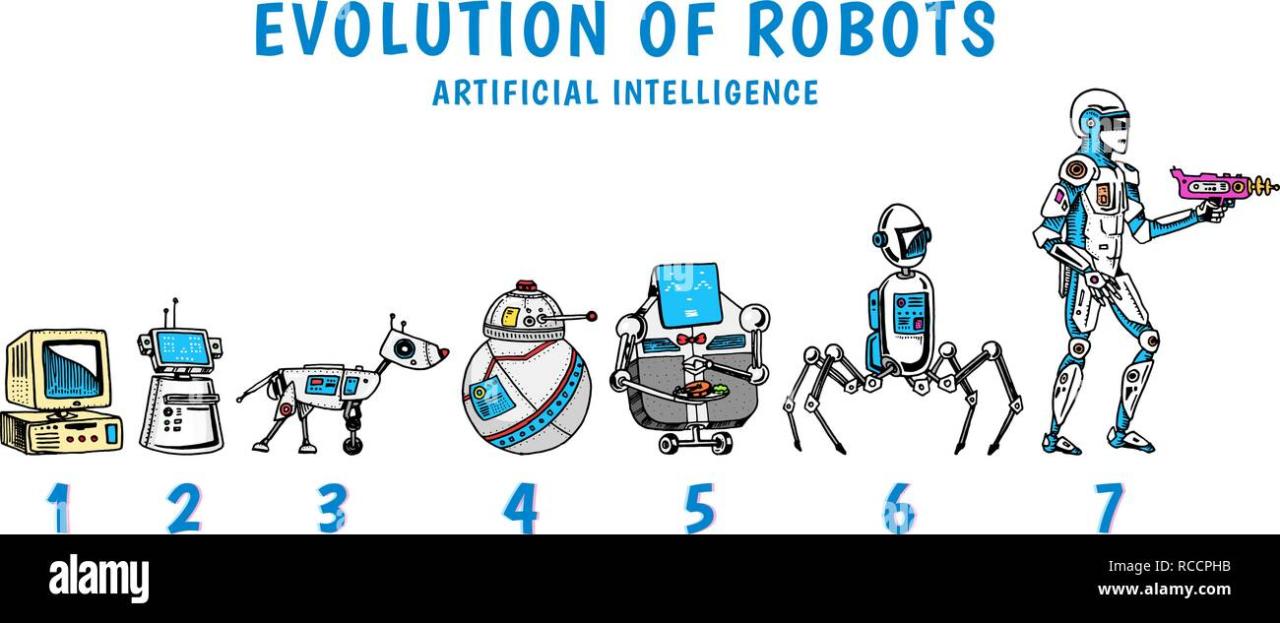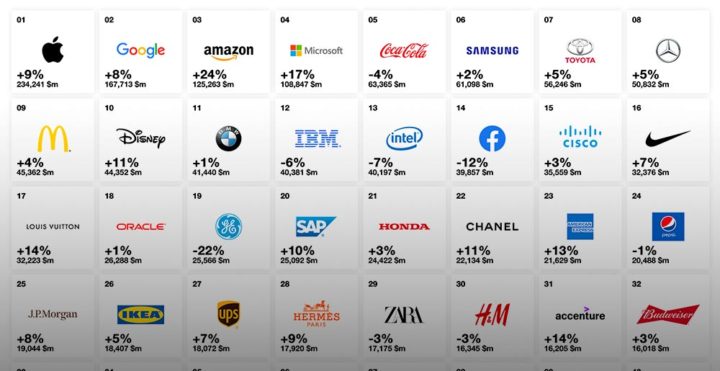Evolutionary Technologies: Shaping the Future
Evolutionary technologies are not just the next step in technological advancement; they are a fundamental shift in how we create and interact with technology. Unlike traditional technologies, which are designed […]

Evolutionary technologies are not just the next step in technological advancement; they are a fundamental shift in how we create and interact with technology. Unlike traditional technologies, which are designed and built for specific purposes, evolutionary technologies are inherently adaptable, capable of learning, and constantly evolving. This inherent adaptability allows them to learn from their environment, improve over time, and even emerge in unexpected ways.
These technologies are driven by a confluence of factors, including rapid advancements in computing power, the increasing availability of data, and a growing need for solutions to complex societal challenges. From the rise of artificial intelligence to the transformative potential of biotechnology, evolutionary technologies are poised to reshape every aspect of our lives.
Applications of Evolutionary Technologies
Evolutionary technologies, with their ability to adapt and optimize solutions, are finding applications across a wide range of industries. From healthcare to manufacturing, these technologies are being used to address complex problems and drive innovation.
Healthcare
Evolutionary technologies are transforming healthcare by improving diagnoses, drug discovery, and personalized medicine.
- Drug discovery: Evolutionary algorithms are used to identify potential drug candidates by simulating the process of natural selection. These algorithms can analyze vast datasets of chemical compounds and predict their effectiveness in treating specific diseases. This approach accelerates the drug discovery process and reduces costs.
- Personalized medicine: Evolutionary algorithms can be used to develop personalized treatment plans for patients based on their individual genetic makeup and medical history. These algorithms can analyze complex patient data and identify optimal treatment strategies, leading to more effective and targeted therapies.
- Medical image analysis: Evolutionary algorithms are used to improve the accuracy and efficiency of medical image analysis. They can help identify patterns and anomalies in images, such as tumors or other abnormalities, which can assist doctors in making accurate diagnoses.
Manufacturing
Evolutionary technologies are used in manufacturing to optimize production processes, improve product design, and enhance supply chain management.
- Production optimization: Evolutionary algorithms can be used to optimize the scheduling of production processes, minimizing downtime and maximizing efficiency. These algorithms can analyze complex production data and identify the most efficient ways to allocate resources, reducing production costs and improving output.
- Product design: Evolutionary algorithms are used to design new products and improve existing ones. These algorithms can explore a wide range of design options and identify the most optimal solutions based on specific performance criteria. This approach can lead to innovative products with improved functionality and performance.
- Supply chain management: Evolutionary algorithms can be used to optimize supply chains, reducing costs and improving efficiency. These algorithms can analyze complex supply chain data and identify the most efficient ways to manage inventory, transportation, and logistics, ensuring timely delivery of goods and reducing waste.
Transportation
Evolutionary technologies are being used to improve transportation systems, enhance traffic flow, and optimize logistics.
- Traffic optimization: Evolutionary algorithms can be used to optimize traffic flow by adjusting traffic light timings and routing vehicles in real-time. These algorithms can analyze traffic data and identify the most efficient ways to move vehicles, reducing congestion and improving travel times.
- Autonomous vehicles: Evolutionary algorithms are used to develop autonomous vehicle systems. These algorithms can learn from real-world driving data and improve the decision-making capabilities of self-driving cars, enhancing safety and efficiency.
- Logistics optimization: Evolutionary algorithms can be used to optimize logistics operations, reducing costs and improving efficiency. These algorithms can analyze complex logistics data and identify the most efficient ways to manage transportation routes, vehicle scheduling, and warehouse operations.
Other Industries
Evolutionary technologies are finding applications in a wide range of other industries, including:
- Finance: Evolutionary algorithms are used in finance to optimize investment strategies, manage risk, and detect fraud. These algorithms can analyze complex financial data and identify patterns and trends that can be used to make informed decisions.
- Energy: Evolutionary algorithms are used in the energy sector to optimize energy production and consumption. These algorithms can analyze energy consumption patterns and identify the most efficient ways to generate and distribute energy, reducing costs and improving sustainability.
- Agriculture: Evolutionary algorithms are used in agriculture to optimize crop yields, improve pest control, and enhance resource management. These algorithms can analyze complex agricultural data and identify the most efficient ways to manage crops, livestock, and resources, increasing productivity and sustainability.
Future Trends in Evolutionary Technologies

Evolutionary technologies, powered by principles of natural selection and adaptation, are constantly evolving and pushing the boundaries of what’s possible. These technologies are poised to revolutionize various aspects of our lives, from healthcare and manufacturing to artificial intelligence and environmental sustainability.
Emerging Trends and Research Areas
The field of evolutionary technologies is witnessing exciting advancements, with researchers exploring innovative applications and pushing the limits of what’s achievable. Key emerging trends and research areas include:
- Hyper-automation: Combining AI and automation to streamline processes, improve efficiency, and enhance productivity. This involves using evolutionary algorithms to optimize automation workflows, adapt to changing conditions, and create self-learning systems.
- Bio-inspired computing: Leveraging biological processes and structures to develop novel computational models and algorithms. This area explores concepts like neural networks inspired by the human brain and genetic algorithms mimicking natural evolution to solve complex problems.
- Co-evolutionary design: Utilizing evolutionary algorithms to co-design systems, components, or processes that interact and evolve together. This approach aims to optimize the performance of complex systems by considering their interdependence and facilitating mutual adaptation.
Breakthroughs in Artificial General Intelligence, Synthetic Biology, and Quantum Computing, Evolutionary technologies
These technologies are at the forefront of scientific exploration, with the potential to transform our world in profound ways.
- Artificial General Intelligence (AGI): Evolutionary algorithms are being used to develop AGI systems capable of learning, reasoning, and solving problems across a wide range of domains. This research aims to create AI systems that can adapt to new situations, learn from experience, and exhibit human-like intelligence.
- Synthetic Biology: Evolutionary technologies are playing a crucial role in synthetic biology, enabling the design and creation of new biological systems and organisms. This includes using evolutionary algorithms to optimize gene circuits, develop novel biomaterials, and engineer microorganisms for specific applications.
- Quantum Computing: Evolutionary algorithms are being explored for optimization and problem-solving in quantum computing. These algorithms can help in designing and controlling quantum systems, optimizing quantum circuits, and accelerating the development of quantum algorithms.
Shaping the Future of Society and the Economy
The advancements in evolutionary technologies have the potential to significantly impact society and the economy.
- Enhanced Efficiency and Productivity: Evolutionary technologies can automate tasks, optimize processes, and improve efficiency across various industries, leading to increased productivity and economic growth.
- New Products and Services: These technologies can drive innovation, leading to the development of new products and services that address unmet needs and improve quality of life.
- Sustainable Solutions: Evolutionary technologies can contribute to developing sustainable solutions for environmental challenges, such as optimizing energy consumption, reducing waste, and promoting renewable energy sources.
Last Point: Evolutionary Technologies

The impact of evolutionary technologies is profound and far-reaching. They hold the promise of solving some of the world’s most pressing problems, from climate change to disease, while also presenting unique ethical and societal challenges. As these technologies continue to evolve, it is crucial to engage in thoughtful dialogue about their implications and to ensure their development and deployment are guided by ethical principles and a commitment to responsible innovation.
Evolutionary technologies are constantly pushing the boundaries of what’s possible, from AI to robotics and beyond. If you’re attending a conference or visiting RIT for research, you’ll want a comfortable place to stay. Finding the best hotels near Rochester Institute of Technology is a great starting point for exploring the latest advancements in these fields.
Ultimately, the future of technology is driven by innovation, and these advancements will continue to shape our world in exciting ways.








